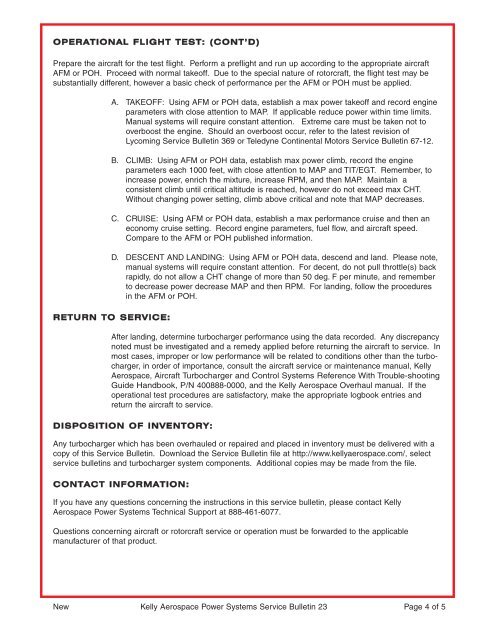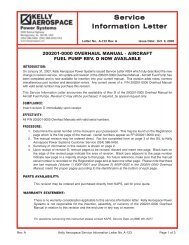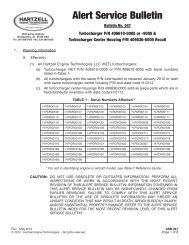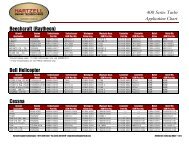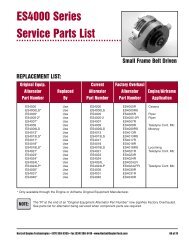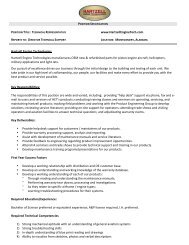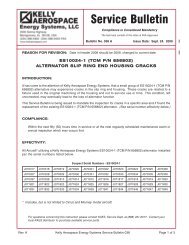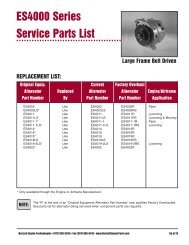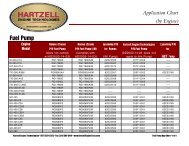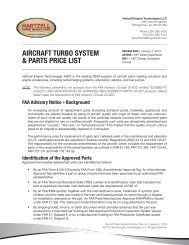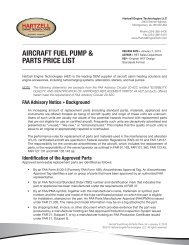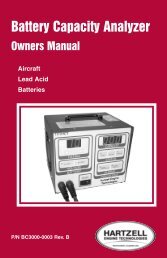Service Bulletin - Hartzell Engine Technologies
Service Bulletin - Hartzell Engine Technologies
Service Bulletin - Hartzell Engine Technologies
Create successful ePaper yourself
Turn your PDF publications into a flip-book with our unique Google optimized e-Paper software.
OPERATIONAL FLIGHT TEST: (CONT’D)<br />
Prepare the aircraft for the test flight. Perform a preflight and run up according to the appropriate aircraft<br />
AFM or POH. Proceed with normal takeoff. Due to the special nature of rotorcraft, the flight test may be<br />
substantially different, however a basic check of performance per the AFM or POH must be applied.<br />
A. TAKEOFF: Using AFM or POH data, establish a max power takeoff and record engine<br />
parameters with close attention to MAP. If applicable reduce power within time limits.<br />
Manual systems will require constant attention. Extreme care must be taken not to<br />
overboost the engine. Should an overboost occur, refer to the latest revision of<br />
Lycoming <strong>Service</strong> <strong>Bulletin</strong> 369 or Teledyne Continental Motors <strong>Service</strong> <strong>Bulletin</strong> 67-12.<br />
B. CLIMB: Using AFM or POH data, establish max power climb, record the engine<br />
parameters each 1000 feet, with close attention to MAP and TIT/EGT. Remember, to<br />
increase power, enrich the mixture, increase RPM, and then MAP. Maintain a<br />
consistent climb until critical altitude is reached, however do not exceed max CHT.<br />
Without changing power setting, climb above critical and note that MAP decreases.<br />
C. CRUISE: Using AFM or POH data, establish a max performance cruise and then an<br />
economy cruise setting. Record engine parameters, fuel flow, and aircraft speed.<br />
Compare to the AFM or POH published information.<br />
D. DESCENT AND LANDING: Using AFM or POH data, descend and land. Please note,<br />
manual systems will require constant attention. For decent, do not pull throttle(s) back<br />
rapidly, do not allow a CHT change of more than 50 deg. F per minute, and remember<br />
to decrease power decrease MAP and then RPM. For landing, follow the procedures<br />
in the AFM or POH.<br />
RETURN TO SERVICE:<br />
After landing, determine turbocharger performance using the data recorded. Any discrepancy<br />
noted must be investigated and a remedy applied before returning the aircraft to service. In<br />
most cases, improper or low performance will be related to conditions other than the turbocharger,<br />
in order of importance, consult the aircraft service or maintenance manual, Kelly<br />
Aerospace, Aircraft Turbocharger and Control Systems Reference With Trouble-shooting<br />
Guide Handbook, P/N 400888-0000, and the Kelly Aerospace Overhaul manual. If the<br />
operational test procedures are satisfactory, make the appropriate logbook entries and<br />
return the aircraft to service.<br />
DISPOSITION OF INVENTORY:<br />
Any turbocharger which has been overhauled or repaired and placed in inventory must be delivered with a<br />
copy of this <strong>Service</strong> <strong>Bulletin</strong>. Download the <strong>Service</strong> <strong>Bulletin</strong> file at http://www.kellyaerospace.com/, select<br />
service bulletins and turbocharger system components. Additional copies may be made from the file.<br />
CONTACT INFORMATION:<br />
If you have any questions concerning the instructions in this service bulletin, please contact Kelly<br />
Aerospace Power Systems Technical Support at 888-461-6077.<br />
Questions concerning aircraft or rotorcraft service or operation must be forwarded to the applicable<br />
manufacturer of that product.<br />
New Kelly Aerospace Power Systems <strong>Service</strong> <strong>Bulletin</strong> 23 Page 4 of 5


